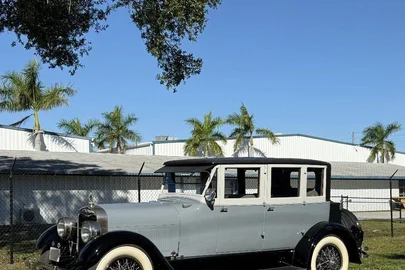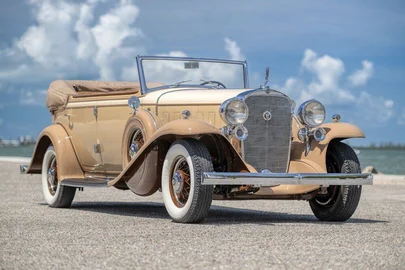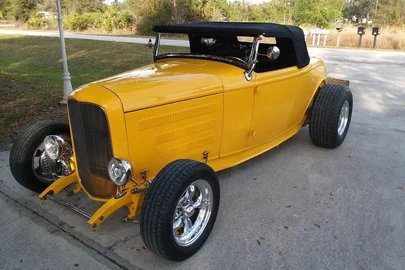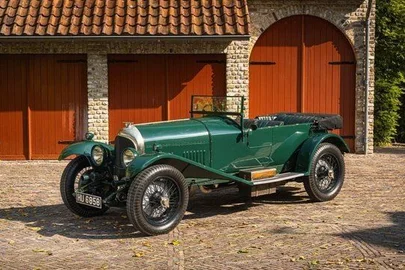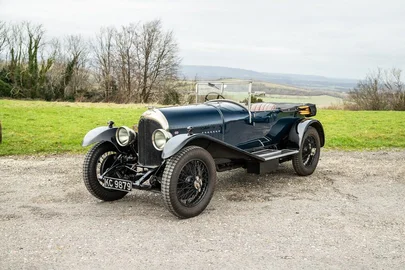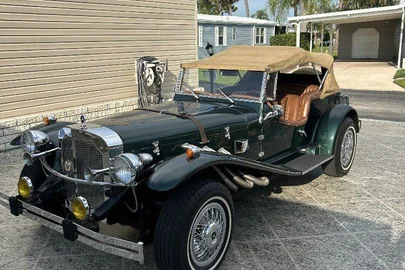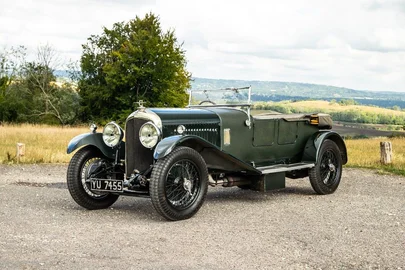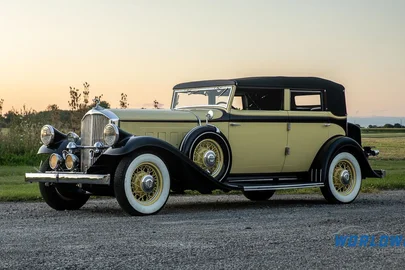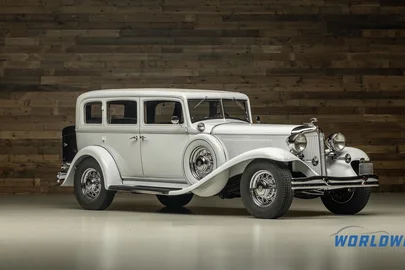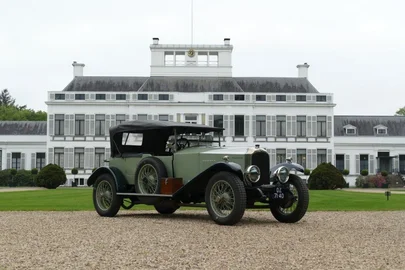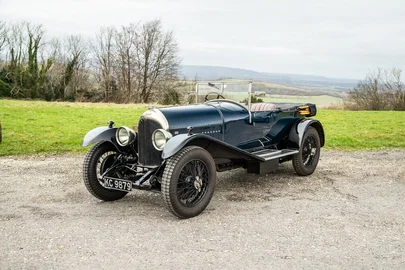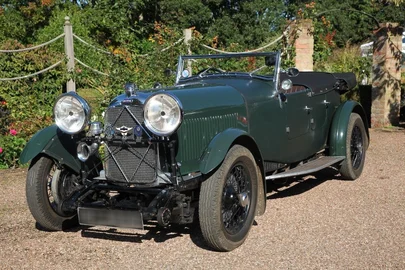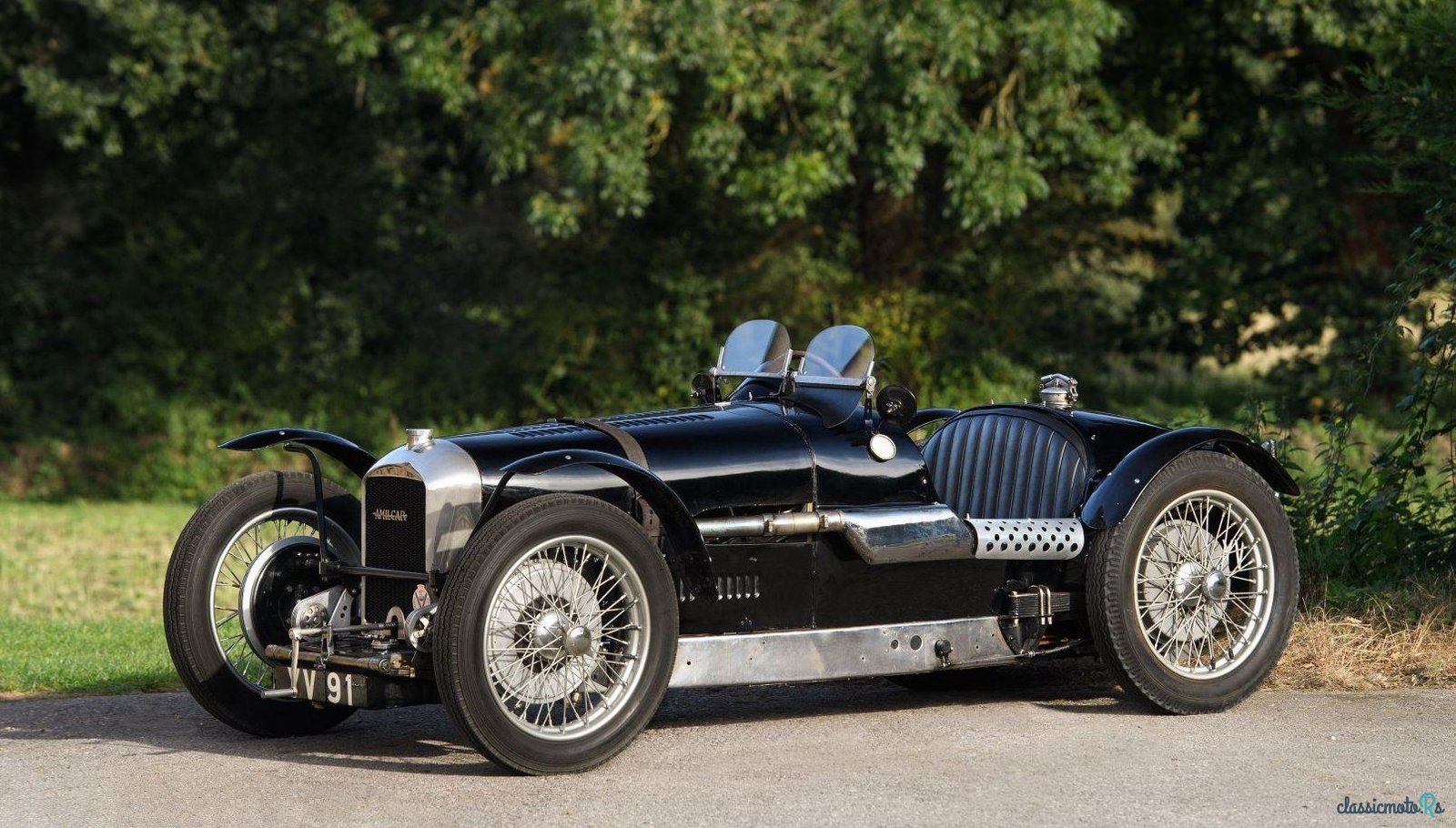
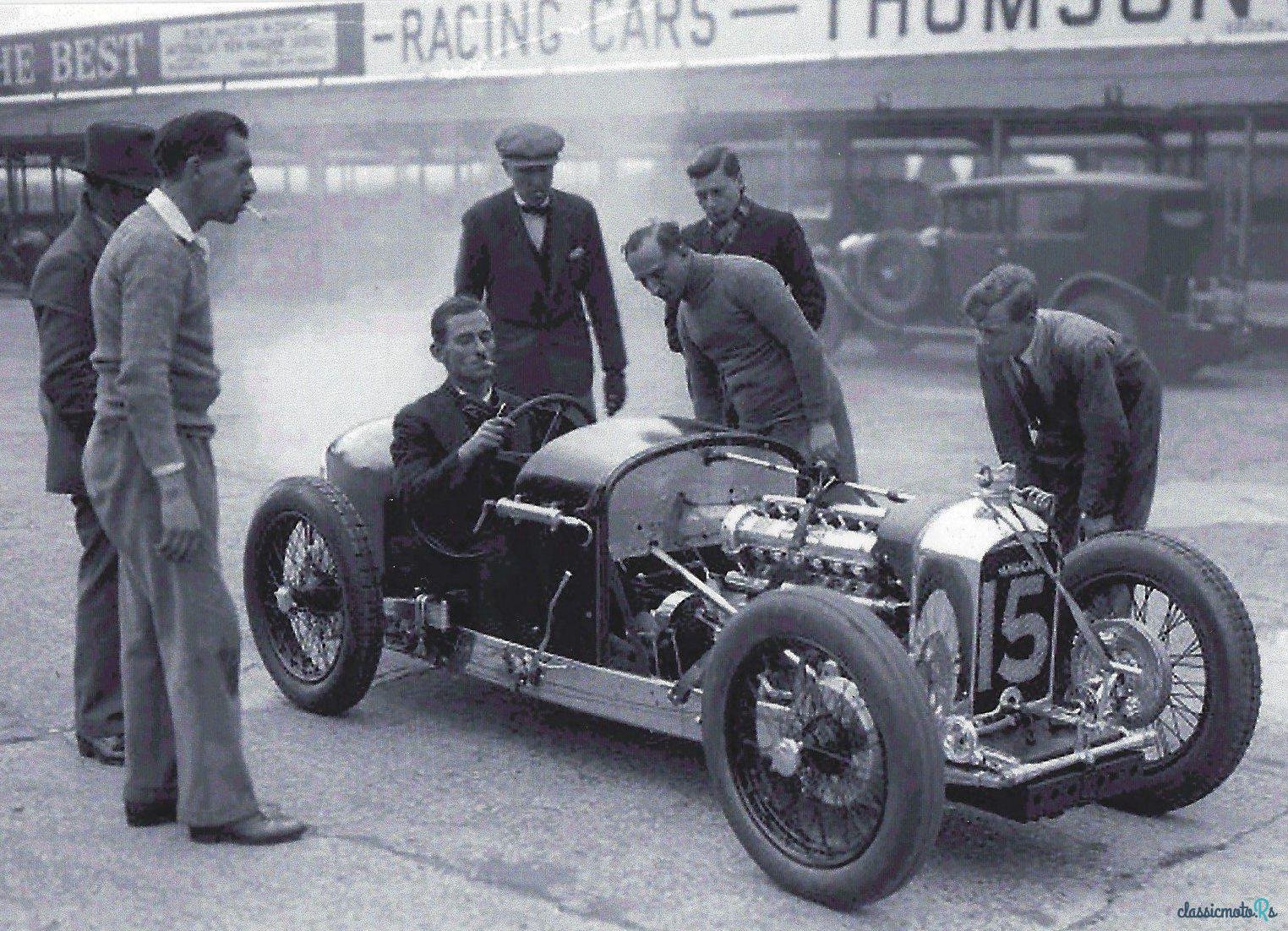
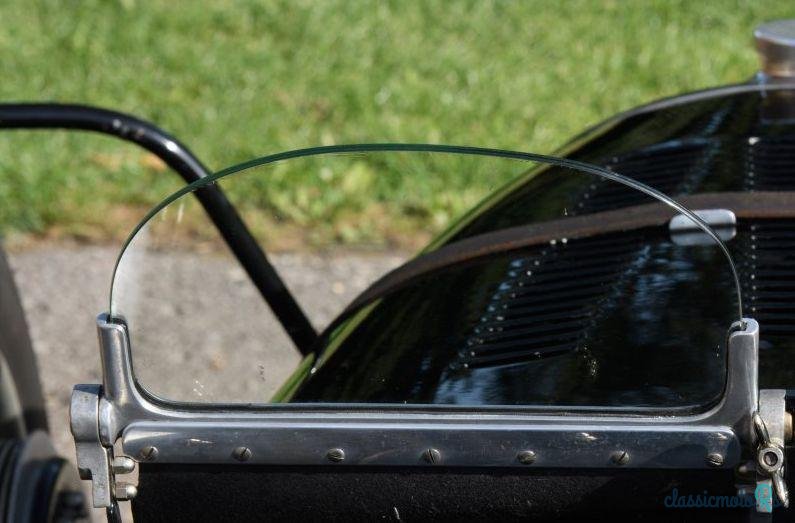
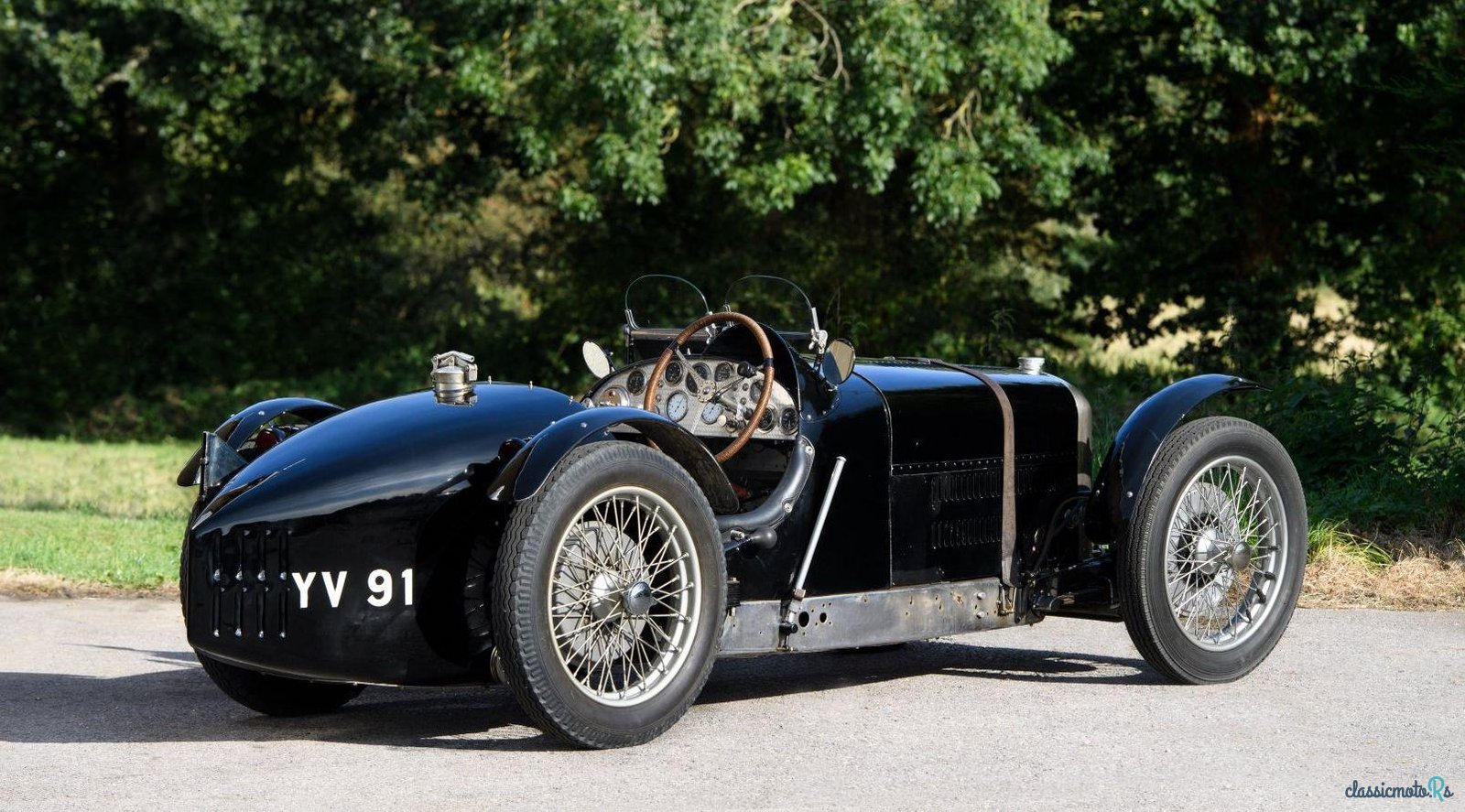
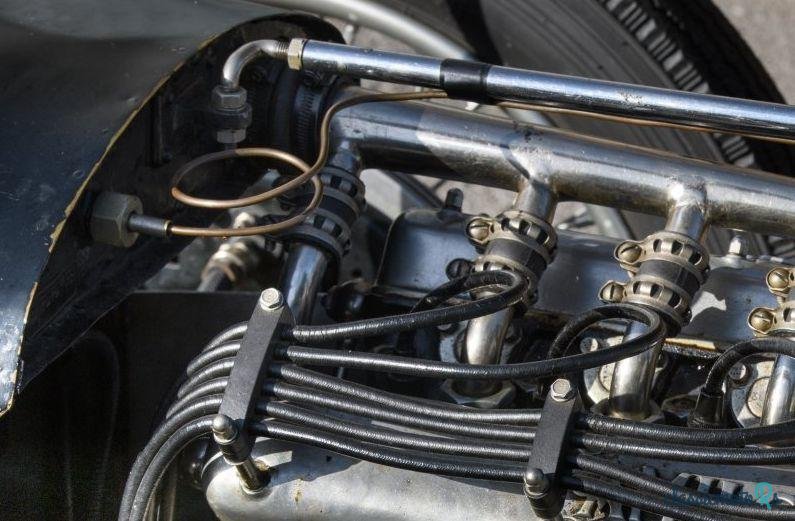
5 photos
1927' Amilcar C6
Signaler cette annonce!Évaluer!Ajouter aux favoris
NégociablePublié 16 Mars 2020ID: bZ7xIH
Périmée
il y a 5 années, 9 mois
il y a 5 années, 9 mois
Information from the owner
Corps: Coupés Sportives
Âge: 93 années
Carburant: Essence
Commentaires du vendeur sur 1927' Amilcar C6
This magnificent Amilcar C6 is one of c45 examples constructed in Paris by the French manufacturer and is one of seven ‘C6’ models imported to the United Kingdom between 1926-28 via British Amilcar concession, S.Vernon-Balls of 96 High Holborn, London
Fitted with optional road equipment for use on the public highway (headlamps and mudguards) and registered ‘YW91’, the 1100cc double overhead camshaft six-cylinder C6 was far more at home on the track than the road
The famed French constructor were known for producing lightweight small capacity sports cars with excellent handling characteristics but the C6 allowed Amilcar a real chance of victory in competitive events against the likes of Bugatti and MG with its new potent six cylinder engine
Known as the ‘Humphreys’ car, this C6 is one of the most recognisable and well documented examples of the model and is considered to be one of the top three C6s to have competed at Brooklands, the other two cars being the sister machine, the ‘Clayton Amilcar’, and the ‘Widengren’ C6 that was later fitted with streamlined bodywork. We are honoured to have been selected to represent its sale on behalf of the estate of the late Bernard Harding
Following its importation by Vernon-Balls in 1927, this C6 was sold new to first owner Beris Harcourt-Wood who kick started its illustrious competition career at Brooklands on May 28th 1928 for the ‘XLV 75MPH Short Handicap’ race organised by the BARC. This race cemented the C6s relationship with the banked circuit in Surrey and over the next nine years the car would go on to be entered into a staggering fifty-six competitive events there in both supercharged and normally aspirated form
In August 1928 the C6 was entered by Vernon-Balls into the Ulster Tourist Trophy alongside its sister car where they proved fastest in class but failed to finish. Wonderful period photographs which have recently come to light show the cars being loaded onto the boat headed for Ireland
In 1930 the car was sold to noted Brooklands racer W.E.Humphreys, who developed the car with the aid of ace tuner Alec Francis (who also prepared the Widengren Streamlined C6 at the same time) making it one of the fastest C6s ever to appear at Brooklands
Featured within an article titled ‘Owen Finchs Racing Amilcar Sixes’ in Motorsport, May 1948, the author states ‘Humphreys Amilcar made its Brooklands debut in 1931, lapping on two occasions in a short handicap at 105.97 m.p.h. In the 500 Mile Race of that year it was leading the 1100cc class with three laps to go when the front axle broke. It had been going around consistently at nearly 100 m.p.h before this occurred’
Humphreys commissioned Amhurst-Villiers to construct a bespoke Supercharger that ran at 16psi which combined with the fitment of special camshafts manufactured by Francis gave the car real race winning potential. During Humphreys ownership the chassis was chromium plated, one of the very first cars to have such treatment, both distinctive and immediately recognisable, this unique styling cue is retained on this special car to the current day
The chrome plated chassis not only looked fantastic but served a technical purpose; Grindlay Peerless motorcycle rider Lacey was one of the first Brooklands racers to use plating on the frames of his machines. Fractured frames and chassis’ were a common problem on the hard and bumpy circuit and by plating the chassis/frame the teams were able to see if any cracks appeared during a race, having a painted chassis made this process significantly harder
Ownership passed in 1933 to Brooklands tuner Richard.F.Oats who raced the C6 in normally aspirated form with twin carburettors, achieving impressive 96mph laps in the process, before selling to custard magnate F.J.Monkhouse in 1934. Monkhouse re-instated the Amhurst-Villiers supercharger and later fitted hydraulic Lockheed brakes, 16’’ wheels and Andre Hart dampers with light alloy brackets
During Monkhouse’ custody (1934-1939) the C6 was actively campaigned and H.T.H Clayton drove the car on many occasions for Monkhouse, it’s highly likely that Clayton looked after the car for him too. An amusing quote from Motorsport August 1935; ‘While the second group was negotiating the fork bends, Monkhouse did his stuff again with the Amilcar, ramming the straw bales backwards this time. He depended on the skill of the other drivers to avoid a collision and was loudly barracked by the spectators in the stand’
In addition to its Brooklands activities, the C6 was raced at the Brighton Speed trials in 1934, Nuffield Trophy race at Donnington in 1936, Shelsley Walsh and Crystal Palace in 1937 mainly piloted by Clayton. Indeed it is worth noting that Clayton recorded the fastest time of any C6 at Brooklands, lapping at 121.47 mph with the engine from our car fitted to ‘Clayton’ car, rewarding him with a 120 mph badge (Double Gold Star) in October 1937
By 1939 Monkhouse had sold the C6 to a young Bugatti enthusiast called Peter Hampton who had intended to race it after the war. Sadly he was badly wounded in action and would never go on to race it
In February 1946 the C6 was acquired by Owen Finch of Weybridge, a large and enthusiastic gentleman driver, who in addition to the Humphreys car, also purchased the ‘Clayton-Amilcar’ a year later in 1947. Finch campaigned both cars together throughout the forties with great success. Due to a change in taxation, Finch re-registered both cars, our car was issued with ‘NPA 217’ whilst the ‘Clayton’ car became ‘MPC 207’
Finch completed a number of modifications during his ownership, notably sprint tanks under the seats and general weight reduction and in the course of campaigning both cars together, parts were interchanged on both cars, explaining why the larger ‘I section’ front axle (constructed by Vickers a few years earlier) became part of this car
Finch’s racing activities were well documented and he was a regular fixture at Prescott, Gransden, Brighton and Great Auclum sprint meetings where the combination of his large stature, small car and flamboyant driving style was greatly admired by the spectators. The C6 was featured regularly in Motorsport magazine and The Autocar amongst other publications at the time, interesting given that it was now an out of date 20 year old racing car!
In 1950 the car changed hands again to a Mr Hern who continued to compete with it and he’s noted to have achieved a standing kilometre of 30.80 seconds at the 1950 Brighton Speed Trials. George Fisher bought the car from Hern in 1952 and kept it for a further ten years, using the car in occasional competitive events before Bernard Harding came to acquire it in 1962
Harding was keen to compete and wanted something quicker than his existing Alvis 12/50 to campaign. Harding enjoyed a successful inaugural season and at the VSCC Silverstone in July he had three strong races: ‘I had a fantastic dice with Schellenberg’s Barnato Hassan in the Boulogne Trophy. The Bentley would storm away on the straights, but we were snapping around him in the corners. On a methanol mix around the old club circuit the C6 was good form 70mph laps. I finished a second ahead of Mudds quick Alfa Monza’
Harding performed well at Goodwood, Oulton Park, Snetterton, Brands Hatch, Prescott and Great Auclum, keeping a log of races and running notes (all retained on file). The VSCC meeting at Silverstone in July 1963 would become the C6s final competitive outing ‘Practice was thwarted by a misfire, after taking two plugs out I discovered two cylinders were filled with water, the head was cracked’
Harding trailered the C6 home with his Lancia Aurelia and laid the car up in his garage where it would remain for a further 34 years. Restoration work was slow in the sixties and seventies as Harding focused on obtaining a pilot’s licence and subsequently acquiring and maintaining a Dehavilland Hornet Moth, as well as driving his Frazer Nash, Lotus and riding vintage Norton motorcycles
Harding was a highly competent scientific engineer, having joined the Royal Engineers during the war, he went on to obtain a masters degree in engineering at the University of Birmingham. He later joined the National Gas Turbine Establishment, working on the Concorde project before he moved to the Fighting Vehicle Research and Development Establishment at Chobham
Harding had completed the restoration by the summer of 1997 and the C6 was once again back on the road. Harding’s attention to detail during the restoration was outstanding and he documented every detail about the car within a collection of seven comprehensive binders, complete with extensive technical drawings, notes, photographs of the rebuild and numerous reference articles
During his 57 year ownership, he was able to acquire the original buff log book for sister ‘Clayton’ car after it was sold and exported overseas. With the permission of the Amilcar register, the C6 was re- registered ‘YV91’, its original plate ‘YW 91’ having gone missing shortly before the war. Harding by now had retired from competitive events, using the car on the road and to demonstrate at VSCC and Brooklands events for pleasure, now running on petrol rather than methanol!
With known history from day one, extensive competition history both pre and post war, exceptional provenance and long term ownership, substantial historical documentation and eligibility for every significant historic racing event on the planet, this C6 is a truly significant and historic competition car. Having not been offered for sale publicly since 1962, this C6 represents a once in a life-time opportunity
Fitted with optional road equipment for use on the public highway (headlamps and mudguards) and registered ‘YW91’, the 1100cc double overhead camshaft six-cylinder C6 was far more at home on the track than the road
The famed French constructor were known for producing lightweight small capacity sports cars with excellent handling characteristics but the C6 allowed Amilcar a real chance of victory in competitive events against the likes of Bugatti and MG with its new potent six cylinder engine
Known as the ‘Humphreys’ car, this C6 is one of the most recognisable and well documented examples of the model and is considered to be one of the top three C6s to have competed at Brooklands, the other two cars being the sister machine, the ‘Clayton Amilcar’, and the ‘Widengren’ C6 that was later fitted with streamlined bodywork. We are honoured to have been selected to represent its sale on behalf of the estate of the late Bernard Harding
Following its importation by Vernon-Balls in 1927, this C6 was sold new to first owner Beris Harcourt-Wood who kick started its illustrious competition career at Brooklands on May 28th 1928 for the ‘XLV 75MPH Short Handicap’ race organised by the BARC. This race cemented the C6s relationship with the banked circuit in Surrey and over the next nine years the car would go on to be entered into a staggering fifty-six competitive events there in both supercharged and normally aspirated form
In August 1928 the C6 was entered by Vernon-Balls into the Ulster Tourist Trophy alongside its sister car where they proved fastest in class but failed to finish. Wonderful period photographs which have recently come to light show the cars being loaded onto the boat headed for Ireland
In 1930 the car was sold to noted Brooklands racer W.E.Humphreys, who developed the car with the aid of ace tuner Alec Francis (who also prepared the Widengren Streamlined C6 at the same time) making it one of the fastest C6s ever to appear at Brooklands
Featured within an article titled ‘Owen Finchs Racing Amilcar Sixes’ in Motorsport, May 1948, the author states ‘Humphreys Amilcar made its Brooklands debut in 1931, lapping on two occasions in a short handicap at 105.97 m.p.h. In the 500 Mile Race of that year it was leading the 1100cc class with three laps to go when the front axle broke. It had been going around consistently at nearly 100 m.p.h before this occurred’
Humphreys commissioned Amhurst-Villiers to construct a bespoke Supercharger that ran at 16psi which combined with the fitment of special camshafts manufactured by Francis gave the car real race winning potential. During Humphreys ownership the chassis was chromium plated, one of the very first cars to have such treatment, both distinctive and immediately recognisable, this unique styling cue is retained on this special car to the current day
The chrome plated chassis not only looked fantastic but served a technical purpose; Grindlay Peerless motorcycle rider Lacey was one of the first Brooklands racers to use plating on the frames of his machines. Fractured frames and chassis’ were a common problem on the hard and bumpy circuit and by plating the chassis/frame the teams were able to see if any cracks appeared during a race, having a painted chassis made this process significantly harder
Ownership passed in 1933 to Brooklands tuner Richard.F.Oats who raced the C6 in normally aspirated form with twin carburettors, achieving impressive 96mph laps in the process, before selling to custard magnate F.J.Monkhouse in 1934. Monkhouse re-instated the Amhurst-Villiers supercharger and later fitted hydraulic Lockheed brakes, 16’’ wheels and Andre Hart dampers with light alloy brackets
During Monkhouse’ custody (1934-1939) the C6 was actively campaigned and H.T.H Clayton drove the car on many occasions for Monkhouse, it’s highly likely that Clayton looked after the car for him too. An amusing quote from Motorsport August 1935; ‘While the second group was negotiating the fork bends, Monkhouse did his stuff again with the Amilcar, ramming the straw bales backwards this time. He depended on the skill of the other drivers to avoid a collision and was loudly barracked by the spectators in the stand’
In addition to its Brooklands activities, the C6 was raced at the Brighton Speed trials in 1934, Nuffield Trophy race at Donnington in 1936, Shelsley Walsh and Crystal Palace in 1937 mainly piloted by Clayton. Indeed it is worth noting that Clayton recorded the fastest time of any C6 at Brooklands, lapping at 121.47 mph with the engine from our car fitted to ‘Clayton’ car, rewarding him with a 120 mph badge (Double Gold Star) in October 1937
By 1939 Monkhouse had sold the C6 to a young Bugatti enthusiast called Peter Hampton who had intended to race it after the war. Sadly he was badly wounded in action and would never go on to race it
In February 1946 the C6 was acquired by Owen Finch of Weybridge, a large and enthusiastic gentleman driver, who in addition to the Humphreys car, also purchased the ‘Clayton-Amilcar’ a year later in 1947. Finch campaigned both cars together throughout the forties with great success. Due to a change in taxation, Finch re-registered both cars, our car was issued with ‘NPA 217’ whilst the ‘Clayton’ car became ‘MPC 207’
Finch completed a number of modifications during his ownership, notably sprint tanks under the seats and general weight reduction and in the course of campaigning both cars together, parts were interchanged on both cars, explaining why the larger ‘I section’ front axle (constructed by Vickers a few years earlier) became part of this car
Finch’s racing activities were well documented and he was a regular fixture at Prescott, Gransden, Brighton and Great Auclum sprint meetings where the combination of his large stature, small car and flamboyant driving style was greatly admired by the spectators. The C6 was featured regularly in Motorsport magazine and The Autocar amongst other publications at the time, interesting given that it was now an out of date 20 year old racing car!
In 1950 the car changed hands again to a Mr Hern who continued to compete with it and he’s noted to have achieved a standing kilometre of 30.80 seconds at the 1950 Brighton Speed Trials. George Fisher bought the car from Hern in 1952 and kept it for a further ten years, using the car in occasional competitive events before Bernard Harding came to acquire it in 1962
Harding was keen to compete and wanted something quicker than his existing Alvis 12/50 to campaign. Harding enjoyed a successful inaugural season and at the VSCC Silverstone in July he had three strong races: ‘I had a fantastic dice with Schellenberg’s Barnato Hassan in the Boulogne Trophy. The Bentley would storm away on the straights, but we were snapping around him in the corners. On a methanol mix around the old club circuit the C6 was good form 70mph laps. I finished a second ahead of Mudds quick Alfa Monza’
Harding performed well at Goodwood, Oulton Park, Snetterton, Brands Hatch, Prescott and Great Auclum, keeping a log of races and running notes (all retained on file). The VSCC meeting at Silverstone in July 1963 would become the C6s final competitive outing ‘Practice was thwarted by a misfire, after taking two plugs out I discovered two cylinders were filled with water, the head was cracked’
Harding trailered the C6 home with his Lancia Aurelia and laid the car up in his garage where it would remain for a further 34 years. Restoration work was slow in the sixties and seventies as Harding focused on obtaining a pilot’s licence and subsequently acquiring and maintaining a Dehavilland Hornet Moth, as well as driving his Frazer Nash, Lotus and riding vintage Norton motorcycles
Harding was a highly competent scientific engineer, having joined the Royal Engineers during the war, he went on to obtain a masters degree in engineering at the University of Birmingham. He later joined the National Gas Turbine Establishment, working on the Concorde project before he moved to the Fighting Vehicle Research and Development Establishment at Chobham
Harding had completed the restoration by the summer of 1997 and the C6 was once again back on the road. Harding’s attention to detail during the restoration was outstanding and he documented every detail about the car within a collection of seven comprehensive binders, complete with extensive technical drawings, notes, photographs of the rebuild and numerous reference articles
During his 57 year ownership, he was able to acquire the original buff log book for sister ‘Clayton’ car after it was sold and exported overseas. With the permission of the Amilcar register, the C6 was re- registered ‘YV91’, its original plate ‘YW 91’ having gone missing shortly before the war. Harding by now had retired from competitive events, using the car on the road and to demonstrate at VSCC and Brooklands events for pleasure, now running on petrol rather than methanol!
With known history from day one, extensive competition history both pre and post war, exceptional provenance and long term ownership, substantial historical documentation and eligibility for every significant historic racing event on the planet, this C6 is a truly significant and historic competition car. Having not been offered for sale publicly since 1962, this C6 represents a once in a life-time opportunity
